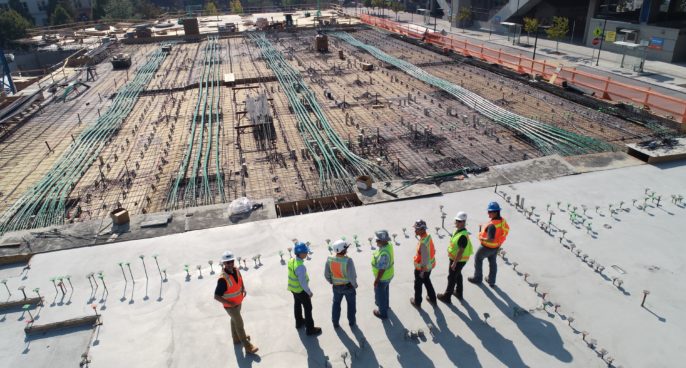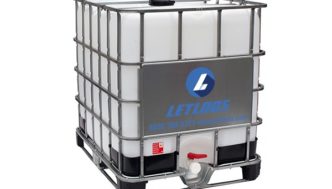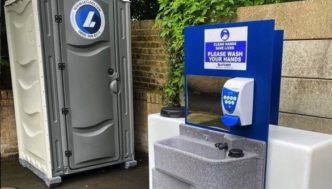
By their very nature, construction sites are generally temporary installations which can be in place for a few hours to a few months (or even longer). Regardless of how long the project lasts, it’s up to those in charge of the work to provide adequate welfare facilities for their staff. Not least to ensure that the workplace remains a healthy, safe and comfortable one for all employees throughout the duration of their involvement in the project.
The specific requirements for construction site welfare facilities are defined in the Construction (Design and Management) Regulations 2007, with Schedule 2 (Welfare Facilities) the relevant chapter of the legislation. In this document, the UK government has outlined what precautions construction site managers must take and which services they must provide to their staff. Those in doubt about their obligations are advised to consult the text on the government website.
Throughout the regulations, the term “so far as is reasonably practicable” is repeatedly used. The ambiguity in this phrase does allow for some wiggle room depending upon the exact site in question, the physical characteristics of the space, the budgetary constraints of the project, the nature of the work and the demographics of the workforce. However, in order to ensure compliance with the law, it’s advisable to follow best practice guidelines for construction site welfare facilities.
This includes the provision of adequate sanitation, washing and changing facilities, as well as a suitable place to take breaks and eat. Drinking water is also, of course, a key consideration which must not be neglected by project managers. Read on for a more in-depth view of each of the various areas which the 2007 Regulations cover and which all construction site managers must consider when planning their next project.
Table of Contents
Sanitation facilities
Regardless of the industry in which they work, every employer is legally obliged to provide toilet facilities for their workforce. In an office, hospitality or retail environment, this is usually not an issue, since the building in which the workplace is housed already has these facilities. When it comes to construction projects, however, the situation is a little different.
That’s because construction jobs are temporary affairs by nature, which deal in the construction of new buildings and structures of the renovation or expansion of existing ones. This means that often, there are no existing facilities which a project manager can take advantage of to accommodate their staff.
Occasionally, there may be an adjoining building that could lend itself to the purpose, but this could potentially disrupt the working habits and routines of those already housed in the building. Such a solution should only be pursued with the explicit permission of the relevant decision-maker and is only suitable for shorter projects.
For any construction job that is expected to take 30 days or more, it’s sensible to make alternative arrangements with regards to the toilets, such as portable chemical toilets, hot wash site toilets or mains connected toilets. When it comes to the toilets for welfare facilities onsite, regulations dictate that the space must be both well ventilated and well lit, as well as maintained in a clean and orderly condition.
The latter requirement can be met by organising a cleaning rota among the workforce, though it may be more convenient to contract professional toilet cleaning services to ensure the job is done to a high standard. For longer projects, it’s also crucial to establish how and when toilets and welfare units will be serviced to guarantee they remain in a safe, clean and fully functioning condition.
Finally, the government regulations require that separate sanitation facilities are provided for men and women. In situations where unisex toilets are shared by both sexes, the toilets must still be contained inside an enclosed room with a door that is lockable from the inside to guarantee the safety and comfort of all staff.
Drinking water facilities
Access to clean drinking water is not just a legal obligation for employers, it’s a basic human right. When it comes to the requirements for construction site welfare facilities, project managers are obliged to ensure that all workers have access to a sufficient supply of clean and potable drinking water in suitable locations around the site.
Ideally, these drinking water taps or fountains will be connected directly to the mains to guarantee that they do not become exhausted. However, it is acceptable to introduce an independent supply of drinking water as long as it is clean and safe to drink. In such situations, steps must be taken to ensure that the supplies are not allowed to stagnate or become contaminated by external pollutants.
In the interests of health and safety, all sources of drinking water must be clearly and conspicuously marked with signs indicating that they are safe to drink, while others should carry signage warning that they are not drinkable. Site managers are also expected to provide enough paper cups or other drinking vessels to allow workers to access the water easily, except in setups where the water is projected out from a jet to be drunk directly.
Washing facilities
Construction can certainly be a dirty job at times. Those who are employed in it for hours on end are likely to become covered in sweat, dust, debris and other filth during the course of their working day, so it’s imperative that adequate washing facilities are installed for them to freshen up after their shift.
The exact nature that these facilities must take will depend upon the work in question. For especially strenuous and filthy work, it may be necessary to provide mobile shower units to allow your staff to completely wash themselves after work. In other situations, an area for them to wash their hands, face and forearms only may be sufficient.
If showers are required for your site, it is important that there are separate facilities for men and women. Again, this requirement can be waived if the showers are housed together, but individually lockable cubicles are available, or if each unit is intended to only accommodate one person at a time. It’s also worth noting that separate facilities for men and women are not necessary when only more basic washing facilities are in use.
Whichever kind of washing facilities are in place, site managers must ensure that they enjoy a clean supply of both hot and cold water. Preferably, this will be attached directly to the mains water supply, but in locations where that is not possible, an adequate source of water must be provided. The washing facilities should also be equipped with soap or hand sanitiser to enhance hygiene, as well as towels or other means of drying hands after washing.
As with the sanitation facilities mentioned above, it’s imperative that the washing facilities have plenty of light and ventilation to allow users to see what they are doing and occupy the space in comfort. They must also be kept in a clean and orderly state, either through the hiring of cleaning professionals or via a private arrangement amongst the workforce.
The requirements for construction site welfare facilities also dictate that there should be a dedicated washing station (including basin, soap/hand sanitiser and drying facility) in the immediate vicinity of each toilet onsite. These should be located near to changing rooms for sites which offer them. Speaking of which…
Changing rooms
Most construction jobs require workers to wear personal protective equipment (PPE), from hard hats and gloves to high visibility jackets and steel toecap boots. In these situations, it’s up to a project manager to provide a place for staff to change from their civilian clothes into their professional uniform, especially if (for reasons of health or proprietary interests) the staff cannot be expected to change elsewhere.
The changing rooms must be separated into those used by men and those used by women to comply with gender equality legislation in the workplace. They should also be equipped with seating and have ample dimensions to allow employees to change from one set of clothes to another and move around easily.
As well as being a dirty job, construction is often an industry which leaves workers exposed to the elements. Thanks to the unpredictability of the Great British climate, that often entails rain, snow and sleet, so the changing rooms of construction site welfare facilities should ideally include a place for staff to dry their work clothes, civilian clothes and personal effects.
Meanwhile, those same items must be kept safe while the individual in question is busy at work. That means that the changing rooms must include lockers or other viable storage solutions in which they can safely store their clothes and belongings while at work. They may also wish to use these facilities to store their work clothes when not at the site.
Rest and relaxation facilities
The Working Time Regulations 1998 is another piece of British legislation which specifies that all workers, regardless of the industry in which they are employed, are entitled to 20 mins of break time for every six hours worked. In the construction industry, which often demands intensive physical labour, the breaks allocated to staff may be longer or more frequent.
In any case, it’s vital that staff members are afforded an appropriate place to kick back and relax in order to recoup their energy and recharge their batteries before returning to work. With regard to welfare facilities on site, regulations state that a rest area must have sufficient tables and seating (with backs) to accommodate as many people as are reasonably expected to use them at the same time.
These areas are also where staff will be eating meals and snacks, so a place for them to do so comfortably is another requirement. That includes the provision of facilities for heating up food and drinks (such as a microwave for food and a kettle or catering urn for drinks) to allow staff members to enjoy their break as much as possible.
Finally, the law also references the fact that space is likely to be used by both smokers and non-smokers, and that the latter should not be disadvantaged or made uncomfortable by the former. Where applicable, arrangements should also be made to accommodate pregnant ladies or young mothers and allow them to lie down when taking their rest.
Welfare units: a one-stop solution
Meeting all of those various obligations and requirements might sound like a tall order for a construction site project manager, especially when they have umpteen other concerns occupying their attention. That’s why it’s sensible to solve all of the issues with a single, ready-made solution in the shape of a welfare unit. These self-contained units are equipped with all the amenities a construction worker might require, all in a single location.
The welfare units for hire from LetLoos are a modern and durable option for meeting your construction site welfare facility requirements. The exact configuration of the unit can be adjusted to satisfy your needs, while all units are delivered in pristine condition and stocked with all the essentials your team of workers might need, including kettles, microwaves, soap and toilet paper – as well as a box of biscuits to get you up and running! Toilet and welfare unit servicing can also be arranged on a weekly basis for those longer projects.
Are you worried about meeting your legal obligations for your next construction project? All of the welfare units provided by LetLoos are fully compliant with the Health, Safety and Welfare (HSE) Regulations of 1992, so you can rest assured you and your staff are in good hands when you contract our services. Why not get in touch with us for a free, no obligation quote? Simply outline your requirements and we’ll get back to you as soon as we can. Contact us today!



